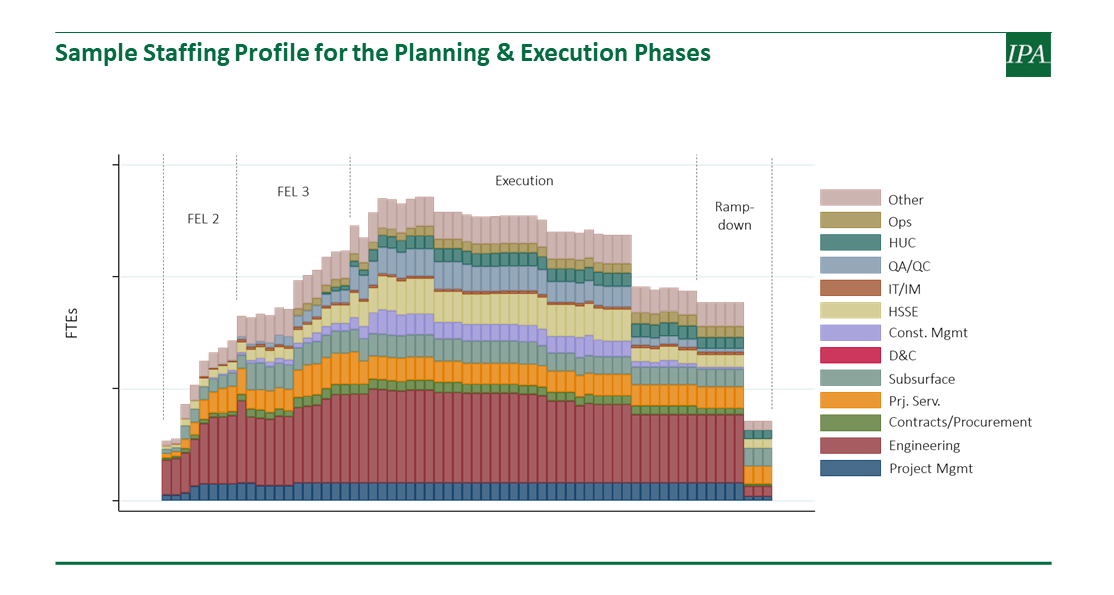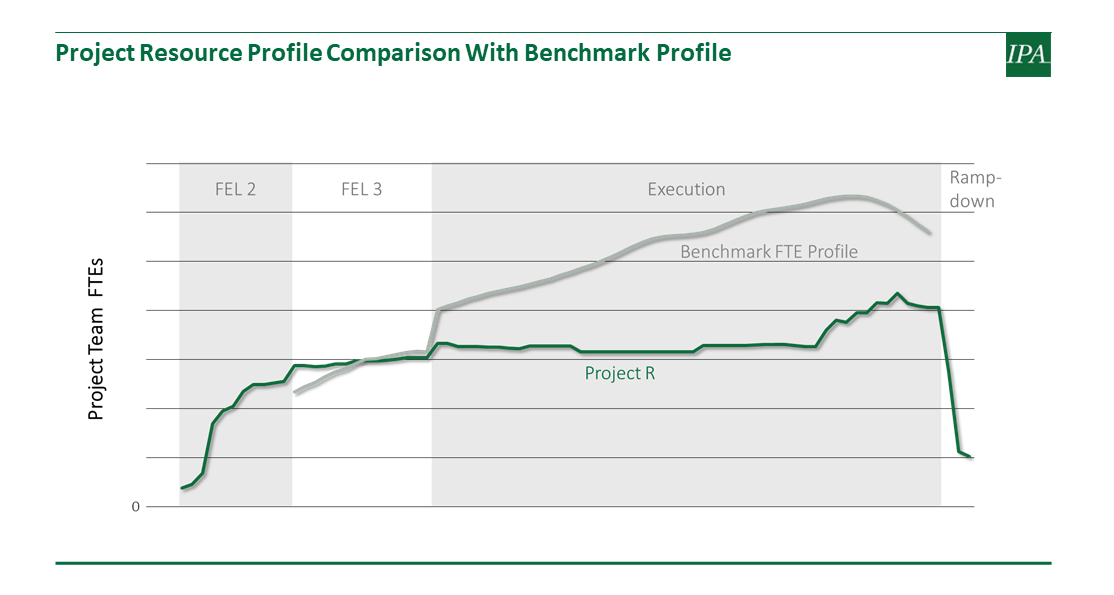The Problem
A company planning to execute a complex, multi-scope project for the first time in many years came to IPA for help in understanding staffing requirements for the team. Because this was the first project of this magnitude for the company in recent history, the company needed guidance in creating a staffing plan. The team lacked a single complete life cycle staffing plan that included execution, which is atypical for projects approaching the Define phase (Front-End Loading [FEL] 3).
What IPA Did
The formation of the owner team is the foundation of project success. Strong owner teams include all the skills and points of view required to assemble the scope that will be acceptable to operations while meeting business needs with respect to cost, time to first production, and production quality and reliability.
IPA used its new Upstream Team Staffing tool, which is based on detailed staffing information taken from 55 major E&P developments, to identify not only how many team members were needed but also how many in each role and when those staff members should be added to the team. Bringing the right team members in at the right time supports megaprojects, which are inherently fragile, because it ensures that team members with the right expertise and decision-making authority are available to address issues in a timely manner before they cascade into future phases.
A sample staffing profile for the planning (FEL) and execution (detailed engineering and construction) phases is shown below.

As can be seen, staffing levels typically peak early in execution after ramping up throughout definition. The number of full-time equivalents (FTEs) needed, as well as the specific positions needed and the timing, is determined by the project characteristics, including facilities capacity and type, hydrocarbon type, technology used, contracting strategy, and operating model. Thus, we can determine the industry Best Practice staffing profile based on a project’s unique characteristics. After we have the Best Practice profile, we can compare it to what is planned for the project, as shown below.

The figure above compares the project’s overall staffing plan with Best Practice. For the sample project, we found that the resources planned matched industry Best Practices through the Define phase. At the start of execution, however, when industry Best Practice is to ramp up, this project planned to keep the resource level where it was, lagging industry Best Practices. Understaffing at this critical time, especially in certain positions, can lead to project failure; this is particularly the case for megaprojects, which are hard to get back on track once things go wrong.
The comparison is also done on a function‑by‑function basis. It is not unusual for a project team plan to include too many FTEs in one position and not enough in another. For example, the sample project’s engineering staffing was on the low end in the Define phase but construction management was staffed above range for that phase. Knowing the ideal staffing for each position in each phase ensures owner resources are used to their best advantage.
How It Turned Out
IPA’s assessment helped our client ensure that the project team had the right people at the right time for project success. Moreover, as this project was one in a series, the findings and lessons learned from this project could be applied to future projects.
The case study highlighted here involved a company that needed help building its staffing plan from the bottom up. Other clients have used this tool to confirm their current plans and tweak them to give their projects the best chance of success. The upstream staffing assessment is also an important tool for project managers who need to ensure a corporate push for lean staffing does not derail their projects or for companies in joint ventures who need independent support for their plans.